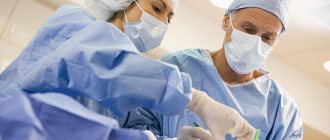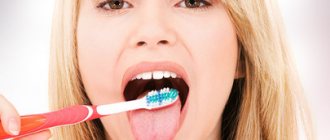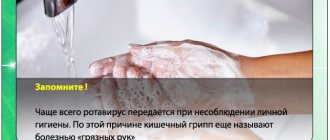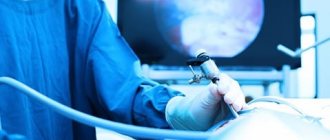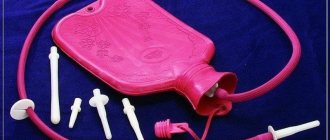One of the most common medical procedures used for therapeutic or diagnostic purposes is probing. For this procedure, a silicone probe is used - a soft tube made of a safe thermoplastic material. It helps to examine various cavities of the body, rinse them or administer medicinal solutions. The most commonly used is a gastric tube. Moreover, it is necessary not only for diagnosis or treatment. It helps provide nutrition to patients who are unable to eat food naturally.
What it is
A gastric tube is a soft rubber tube made of non-toxic implant material. It is a thermoplastic transparent polyvinyl chloride. This material is absolutely safe for the body. Under the influence of body temperature, it softens, which reduces discomfort for the patient.
The tube for probing the gastrointestinal tract has rounded edges at one end to prevent injury to the mucous membrane, as well as two or four holes on different sides. They ensure unhindered administration of nutritional or therapeutic solutions, good patency and eliminate the risk of blockage.
At the other end of the tube there is a connector, which serves as a conductor between the probe itself and other devices for performing manipulations. For example, you can connect a regular syringe or a needle with a mandrel to it to take samples of gastric contents. The connectors have different colors depending on the size of the probe. According to GOST, there are 14 sizes of such devices.
Gastric tubes can be thick or thin, they can have different thicknesses - up to 15 mm, which depends on the purpose of use. Their length varies from 40 cm in the children's version to 125 cm for duodenal intubation. Markings are applied along the entire length of the tube, allowing you to control the depth of insertion. They are applied using a laser, so they do not wear off. The first mark is located at a distance of 40 cm from the end, the rest - every 5-10 cm, up to 76 cm.
The tube is treated with ethylene oxide and packaged in a sterile sealed bag. Open it just before using the device. Each probe is disposable and must be disposed of after the procedure.
The gastric tube is a sterile hollow tube made of transparent non-toxic PVC
Types of probes
Such devices come in different sizes, which depend on the thickness of the tube. In addition, they are available in lengths of 40, 80, 110, 125 cm. Common sizes are from 6 to 22. The thinnest probe has an outer diameter of 2 mm and is marked in green. Most often it is used for young children. Children's probes have sizes up to 14 and a diameter of up to 5 mm.
Gastric tube size 16 is used for adults. Its diameter is 5.3 mm, and the connector color is orange. The thickest probes, purple, green, gray and brown, are used the least often, as their use often causes serious discomfort and can cause complications. After all, the thickness of their tube is more than 8 mm.
In addition to size, there are different types of gastric tubes based on their intended purpose. They are:
- aspiration for collecting stomach contents;
- diagnostic, having an olive at the end into which electrodes are mounted;
- endoradiosondes with a built-in transmitter;
- duodenal - longer and thinner, having an olive with holes at the end;
- thin for energy nutrition.
Such devices also differ in production. Russian probes, Viroban, BasisMed, are more common and accessible. Also known are Chinese catheters from Integral Medical Products and Ningbo Greetmed Medical Instruments, and American catheters from Alba Healthcare. But the devices produced by the Dutch company Apexmed are considered to be of the highest quality.
Gastric tubes come in different lengths and thicknesses
Advantages of installing probes at home
A complication of a stroke with loss of the swallowing reflex or various injuries to the esophagus - such conditions will definitely not allow you to eat comfortably. Installing a nasogastric tube at home will completely solve the problem. Advantages of the ordered service:
- Maximum convenience. The patient will be relieved of worries, because the nurse will tell you how to tune in to the procedure in advance and how to breathe while the probe is advancing. Familiar surroundings will help you relax, and you won’t have to “shake” in public transport on the way back.
- Quality of the procedure. Services are provided only by certified nurses with extensive experience.
- Nice service. No meaningless conversations, siphoning off funds or absurd recommendations. A specialist will come to your home and do his job competently.
- Affordable prices. Installing the probe will not incur significant financial costs.
- Response speed. In Moscow there are no nurses as efficient as those from MedinHome, who get to the patient in the shortest possible time.
In order to clarify the cost of the procedure, you need to contact the dispatcher by contact number or WhatsApp.
Benefits of a home nurse from MedinHome
Always the right result
No unnecessary procedures, offers to buy a panacea in your pharmacy and pumping out money, which visitors to clinics have long been accustomed to
Quality and safety
Only certified nurses with recommendations, confirmed qualifications and many years of experience provide services.
Saving your time
Medical care at home will save you from having to stand in traffic jams and queues. The nurse will arrive at the address you specified at a pre-agreed time
When to use
Probing of the gastrointestinal tract is a safe procedure that is used for diagnostic or therapeutic purposes. It is necessary to collect the contents of the stomach and duodenum. A thick gastric tube up to size 36 is most often used for these purposes. It has a rounded closed end and 2-4 holes. This makes it easier to collect the contents of the stomach or duodenum.
This procedure is necessary to assess secretory function, detect bleeding, and pancreatic enzymes. Similar probing is carried out if a peptic ulcer, gastritis, or pancreatitis is suspected. By suctioning the contents of the stomach with a thick probe, the volume of this organ is determined. A similar procedure is also part of an X-ray and gastroscopic examination of the gastrointestinal tract.
Such sounding is also used for decompression - removing air from the stomach. This is necessary, for example, in case of swelling and expansion of this organ after artificial ventilation of the lungs using a face mask.
Constant emptying of the stomach is necessary for intestinal obstruction, stagnation of gastric contents, gastric dilatation and other pathologies. For a complete examination of the gastrointestinal tract, fractional intubation is used, in which contents are collected throughout the entire digestive tract. For this, a thin probe is used, which makes the procedure more comfortable.
Probing is also used for therapeutic purposes - for the administration of medicinal or nutritional solutions, lavage, enteral nutrition.
Rinsing the gastrointestinal tract is necessary in case of poisoning, pyloric stenosis, acute gastritis, as well as when toxins penetrate through the mucosa, which happens with renal failure. For lavage, a thick gastric tube up to size 32 with several oval holes at the end is most often used.
The administration of drugs and enteral nutrition is carried out using thinner tubes. Such gastric tubes of 10-16 sizes are installed permanently when it is impossible to eat food naturally. This is necessary after complex operations, when the patient is unconscious for a long time, in case of burns and mental illness.
Probing of the stomach is used to lavage, withdraw its contents or administer medications
Carrying out diagnostics
The probing procedure can take up to 2.5 hours, depending on the technique used and the patient’s condition. A lot of probing techniques have been developed; most often the procedure is carried out according to the standard scheme:
- All its contents are pumped out of the stomach;
- Within an hour, the basal secretion is pumped out - the fluid produced by the stomach on an empty stomach. The liquid is withdrawn in 5-minute portions every 10 minutes. It turns out 4 portions of secretion for every hour, each of them is poured into a separate jar and marked;
- Then a test breakfast or a secretion stimulant is administered. A test breakfast is broth, cabbage broth, or one of the options offered by other methods. The secretion stimulant is gestamine, pentagastrin or insulin. Gestamine and insulin are not used if the patient suffers from cardiac, hepatic, renal or pulmonary failure, hypertension, or diabetes. Pentagastrin also has a number of limitations: stage 2 or 3 circulatory failure, cardiac arrhythmias and hypotension. The trial breakfast is now used less and less: it gives a less pronounced stomach reaction;
- After half an hour (during this time the stimulus has time to fully act), the secretion produced in response to the stimulus is also taken in 15-minute portions.
Each portion of the secretion is studied in the laboratory, based on the results an acidity curve is constructed, the content of peptides, hydrochloric acid and impurities (bile, blood, starch, muscle fibers, blood and others) is assessed. The specialist also evaluates the appearance, smell and consistency of the secretion. The total amount of liquid pumped out also matters.
Features of application
Gastric intubation is a fairly safe and, in most cases, painless procedure. But it must be carried out according to strict indications:
Diagnosis of stomach ulcers
- with gastritis;
- peptic ulcer of the stomach and duodenum;
- intestinal obstruction;
- reflux esophagitis;
- stomach atony;
- if bleeding is suspected;
- poisoning;
- after surgical interventions.
But this procedure is not for everyone. A probe should not be inserted in case of injury, stenosis or rupture of the esophagus, or in the absence of a pharyngeal reflex. After operations on the gastrointestinal tract, intubation can only be used according to strict doctor’s instructions. Inserting a probe through the nose is contraindicated in cases of deviated nasal septum.
Careless or incorrect insertion of such a device can lead to complications. Most often, the tube gets into the trachea, damaging it. Irritation of the pharynx or inflammation of the mucous membrane may also occur. When it is administered through the nose, nosebleeds and damage to the mucous membrane often occur. Most often, such complications are caused by a thick gastric tube.
To prevent complications, certain rules must be followed when inserting the tube.
Feeding through a nasogastric tube.
The probe is lowered to the level of the stomach. Air should not be allowed to enter there. To do this, the funnel is tilted and filled with food. The food should be warm, its temperature should be 38-40 degrees. Once the funnel is filled with food, it is gradually raised up until the food remains only in the neck of the funnel. Next, the funnel descends again down to the level of the stomach. It is then filled with food and the process is repeated in a similar manner. After all the food has been introduced, boiled water or tea is poured into the tube.
After the introduction of food is completed and the probe is washed, a clamp must be installed on its end. Next, remove the funnel. Afterwards, wrap the end of the probe in a sterile napkin or place it in a tray, or you can fix it on the patient’s neck. Leave in this state until your next meal.
Enteral nutrition
Previously, when it was impossible to feed seriously ill patients in the usual way, parenteral nutrition was used through a venous catheter. But this procedure often caused complications, such as sepsis or liver problems. In addition, the lack of food in the stomach can lead to degenerative processes. Therefore, recently such patients are fed through a gastric tube from 10 to 18 sizes. Through it, the nutrient solution enters directly into the stomach or intestines.
This device is most often inserted through the nasal passages. After treating the end of the tube with lidocaine gel, it is positioned perpendicular to the facial bones in the lower part of the nasal passage and carefully moved deeper. If such installation of the probe is not possible, it is inserted through the mouth. In this case, an obturator is used to prevent the nutrient solution from entering the trachea.
Enteral nutrition can be complete when the patient is unconscious, or supplemental when only part of the food is administered in this way. Moreover, the nutrient solution can also be supplied in different ways:
- continuous drip method;
- using an infusion pump;
- in parts at certain intervals.
For this method of feeding, thin tubes are used. If long-term enteral nutrition is required, it is best to use a collapsible tube. After the introduction of the nutrient solution, it collapses and becomes flat. This prevents the development of bedsores of the esophagus and pharynx. The length of the tube depends on the age and height of the patient. Children usually use probes from 30 to 70 cm, adults - 110 cm-125 cm.
Often a gastric tube is used when enteral nutrition is required.
Installation
Inserting a gastric tube is a simple procedure that is performed by nursing assistants.
The algorithm for gastric intubation is as follows:
- preparing the patient for the procedure - measuring blood pressure, pulse, assessing airway patency, explaining the procedure to him;
- determining the length of the tube insertion and marking it;
- when inserting the tube through the mouth, the distance from the mouth to the navel is measured;
- insertion of a tube through the nose is required for enteral nutrition;
- the end of the tube is moistened with warm saline solution or gel with Lidocaine;
- the health care worker stands on the side of the patient, places the rounded end of the tube on the root of his tongue;
- the patient makes swallowing movements, and the healthcare worker advances the tube to the mark;
- to check the correct placement of the probe, 10-20 ml of air is injected into it using a syringe; the appearance of gurgling in the epigastric region indicates that it has entered the stomach, and coughing or difficulty breathing indicates that the probe is in the trachea;
- then the necessary manipulations are carried out, and during enteral nutrition the end of the tube is secured with an adhesive plaster.
It is very important that a gastric tube from size 18 is inserted for a short period of time. Otherwise, damage to the mucous membrane of the pharynx and esophagus may develop due to compression by the thick tube. For long-term use, thin probes should be used. This device must be removed slowly so as not to damage the mucous membrane.
Gastric intubation is a fairly common procedure. But it should be used only as directed by a doctor in a medical facility. The selection and installation of the probe must be carried out by a specialist.
Preparing for the procedure.
It is necessary for the doctor to establish a trusting relationship with the patient or his relatives.
The doctor must tell the patient the purpose of the upcoming procedure and familiarize him with what food he will be given. The doctor should also tell you about the stages of the upcoming procedure. The room should be ventilated in advance. The next stage of preparation for inserting the probe is measuring the distance from the throat to the stomach. To do this, the patient must sit up straight. Then the doctor should take a measurement. There is an alternative way to calculate the distance to the stomach; to do this, you need to subtract 100 cm from the person’s height. In order for the nasogastric tube to easily enter the stomach, it is recommended to moisten it in the Furacilin solution. The solution is diluted in a ratio of 1 to 2000. The nasogastric tube is wetted to the marked mark. Next, you should put the patient on the couch. He lies down on his back. A pillow is placed under the head. It is necessary to make sure that the head is slightly tilted. This position will ensure free insertion of the probe into the nasopharynx. A napkin is placed on the patient's chest. The doctor must carry out this procedure wearing gloves.

